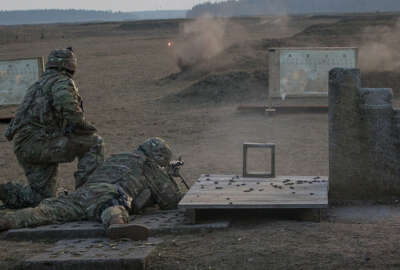Subscribe to Federal Drive’s daily audio interviews on iTunes or PodcastOne.
As the Army prepares to roll out its biggest acquisition reform since the Vietnam era at the end of next month, new details are coming out on how the Army wants to simplify the way it buys.
One way to do that is to have scientists work closely with soldiers and acquisition managers to inform the Army on investment decisions.
The Army already set up eight cross functional teams to hone in on areas where the service wants to modernize the most. Those include long-range precision fires, networks, future vertical lift and next generation combat vehicles.
But Undersecretary of the Army Ryan McCarthy says the new modernization command needs a chief scientist to better the decisions and investments the teams make.
“What we are looking at is within the command itself because of the speed of technology, because of the speed of the pacing of threats, to have that capability at the local level working with the cross functional team leaders. A chief technology officer can help inform us with investment decisions, the maturity of a technology and looking at technological readiness levels. They can be the principal adviser to this commander about choices,” McCarthy said during a Feb. 13 roundtable with reporters. “We need to bring in additional technical talent to support us because we are making multibillion dollar decisions.”
If Congress passes a 2018 defense appropriations bill, the Army could receive nearly $28 billion in modernization funds if lawmakers fund to the president’s request. The president’s budget requests another $32.1 billion for modernization for the 2019 budget.
Those funds go into increasing modernization of Abrams, Bradley, Stryker and Paladin combat vehicles. They also increase the procurement of missiles and the research and development of mobile protected firepower, combat vehicle prototyping and other technologies.
The Army isn’t just trying to improve acquisition by keeping technology and procurement close.
The service also wants its cross functional teams and program executive officers to stay in close contact.
“What we’re trying to push towards is an organizational construct where they are matrixed together. There’s a formalized relationship between the CFT director and the PEO, which we have historically not done as well as we want to. By pushing them closer together they recognize they are in this together. What does this also bring? Accountability,” McCarthy said.
Since October, the cross functional teams have been getting information from industry and academia on how to best build lines of communication between soldiers and leadership to buy and build equipment quickly.
McCarthy says part of that challenge is bringing in the right talent to change the system and leaders who have relationships and experience in the cross functional teams.
Cross functional team leader for lethality Brig. Gen. Christopher Donahue “looked at some examples that came from U.S. Special Operations Command. How do we bring that to the force faster and scale it with respect to night vision goggles. He has a background in both conventional and special operations forces so relationships played a big role as well as experiences,” McCarthy said. “Finding these officers that have these unique relationships and experiences bring that to the fold. If you look in history … they picked the right people and we need to create a generational change in the process.”
The Army will eventually have to codify the roles it’s created as the modernization pilot program.
Right now the cross functional teams report directly to Army leadership, but McCarthy says eventually the service will have to figure out how to build its management structure to deal with day-to-day activities.
“At some point you’ve got to put in the appropriate management level, management layer, to drive this on a daily basis because one of other things you also need is how do we communicate and bring the best to bear of industry and academia so all of these pieces come together to support this process,” McCarthy said.
Copyright
© 2024 Federal News Network. All rights reserved. This website is not intended for users located within the European Economic Area.
